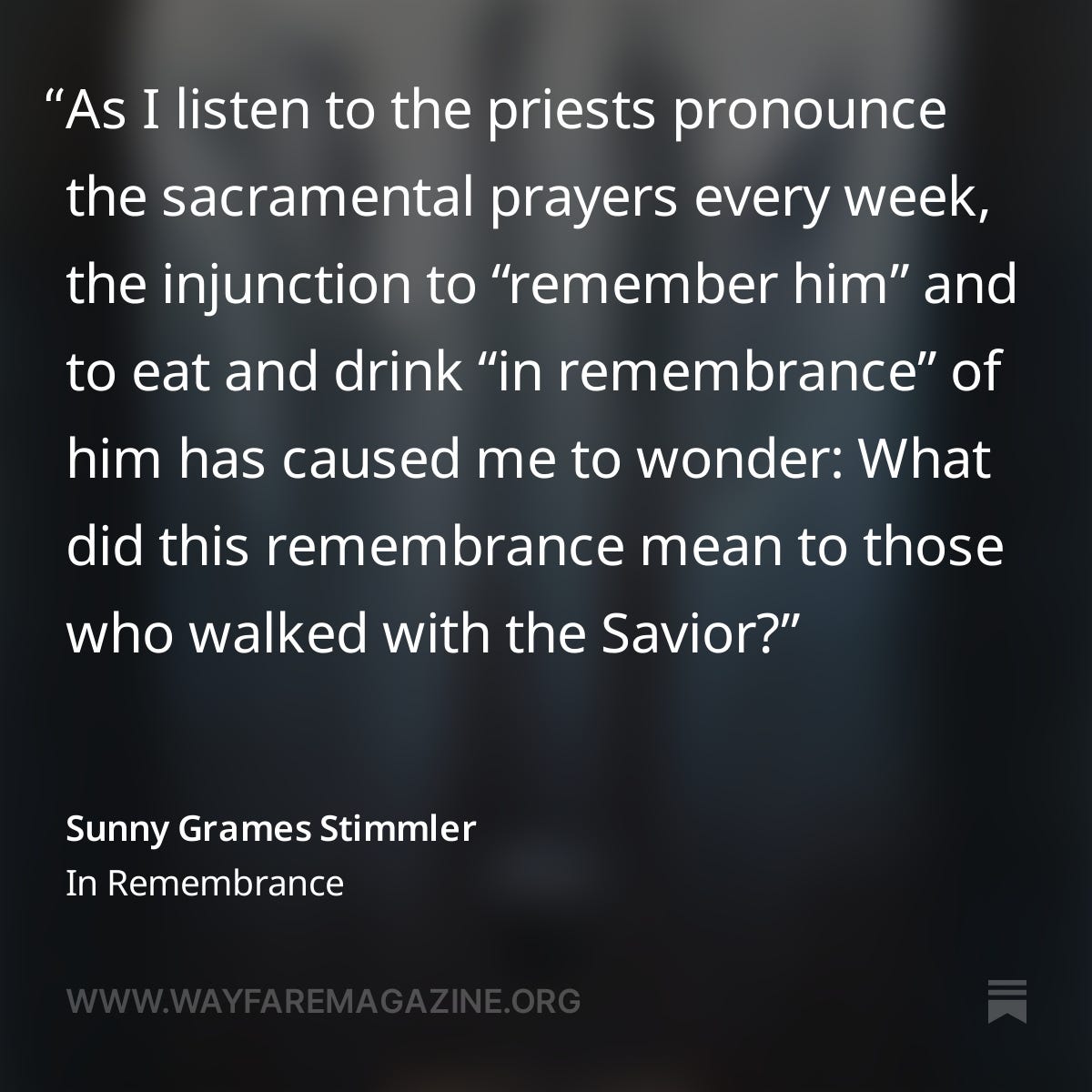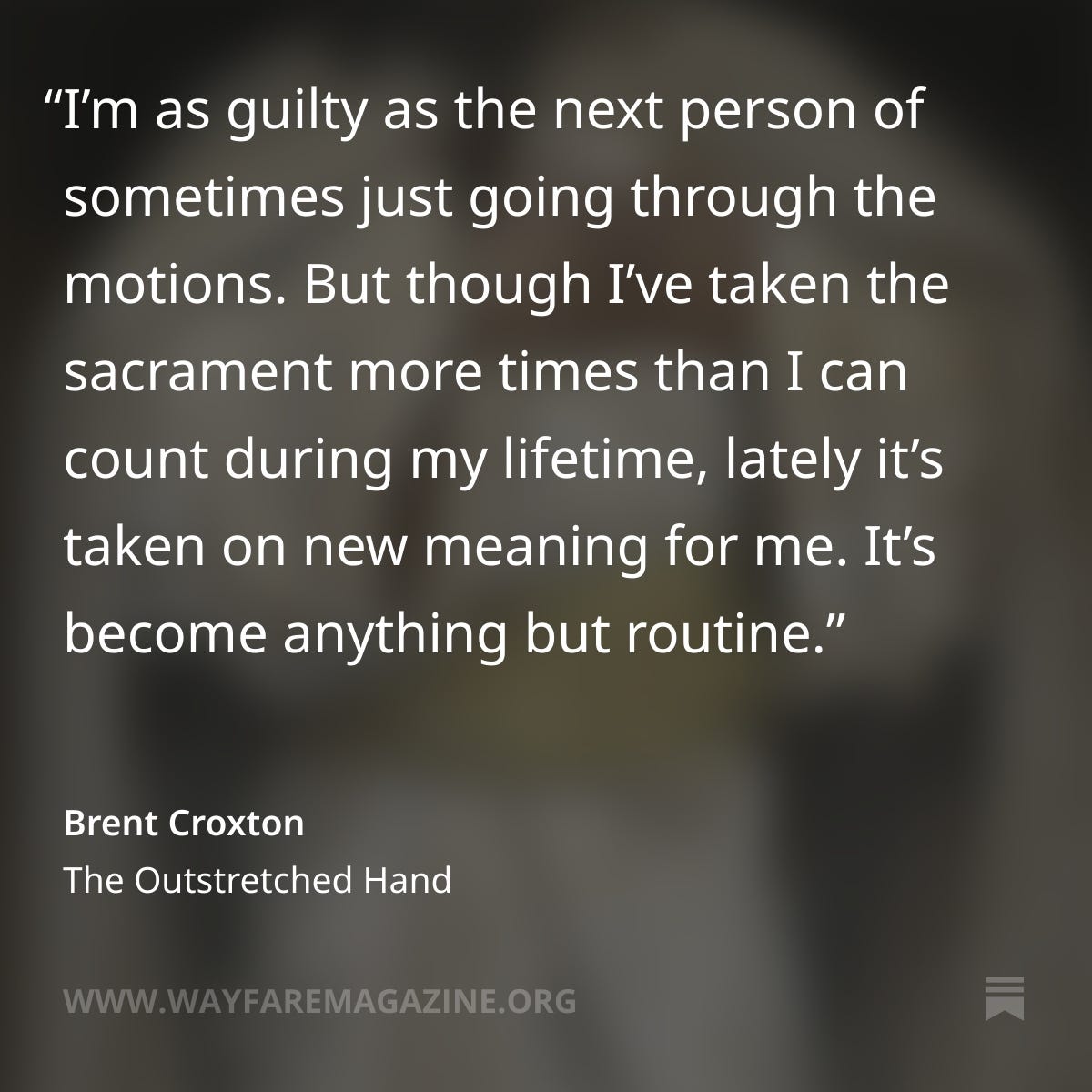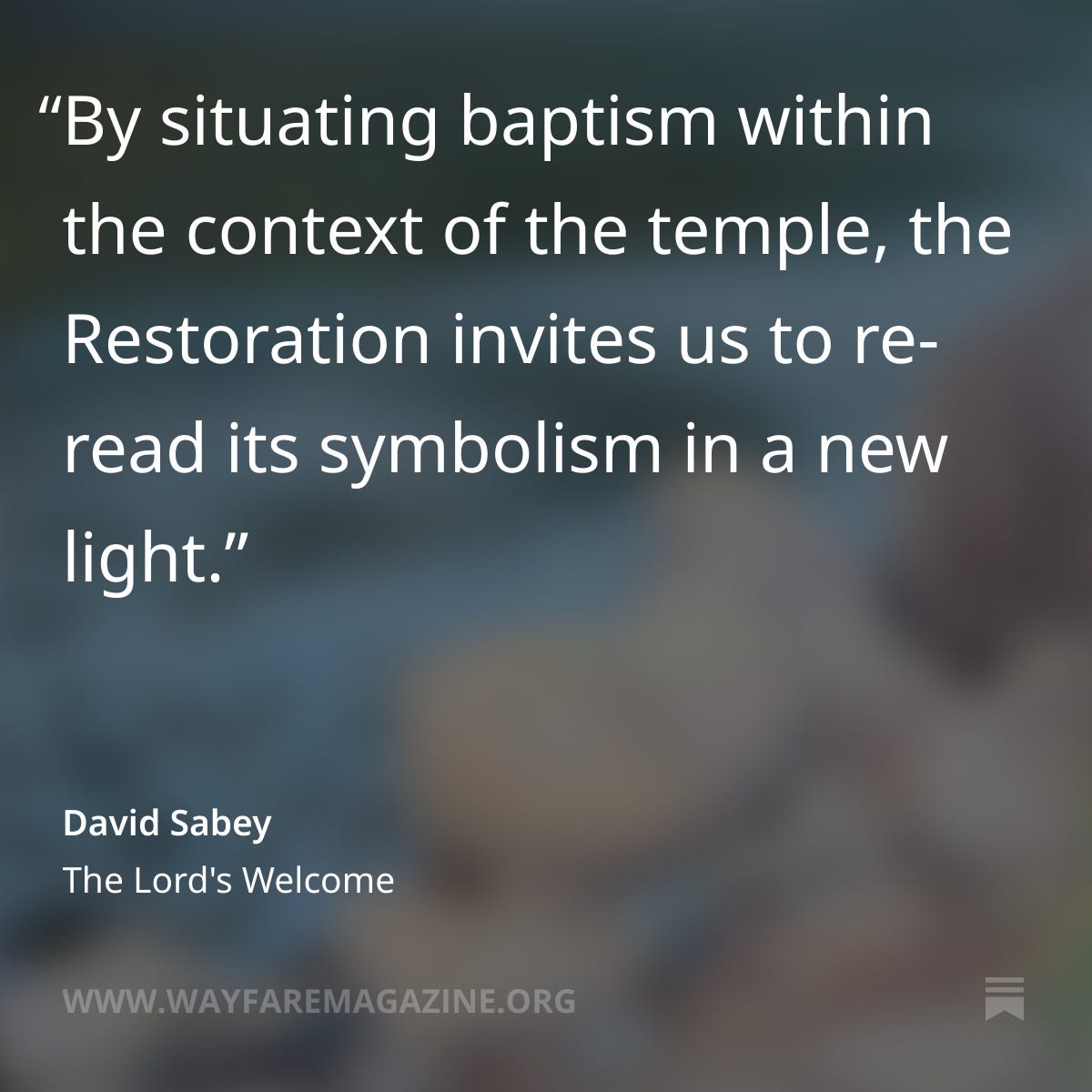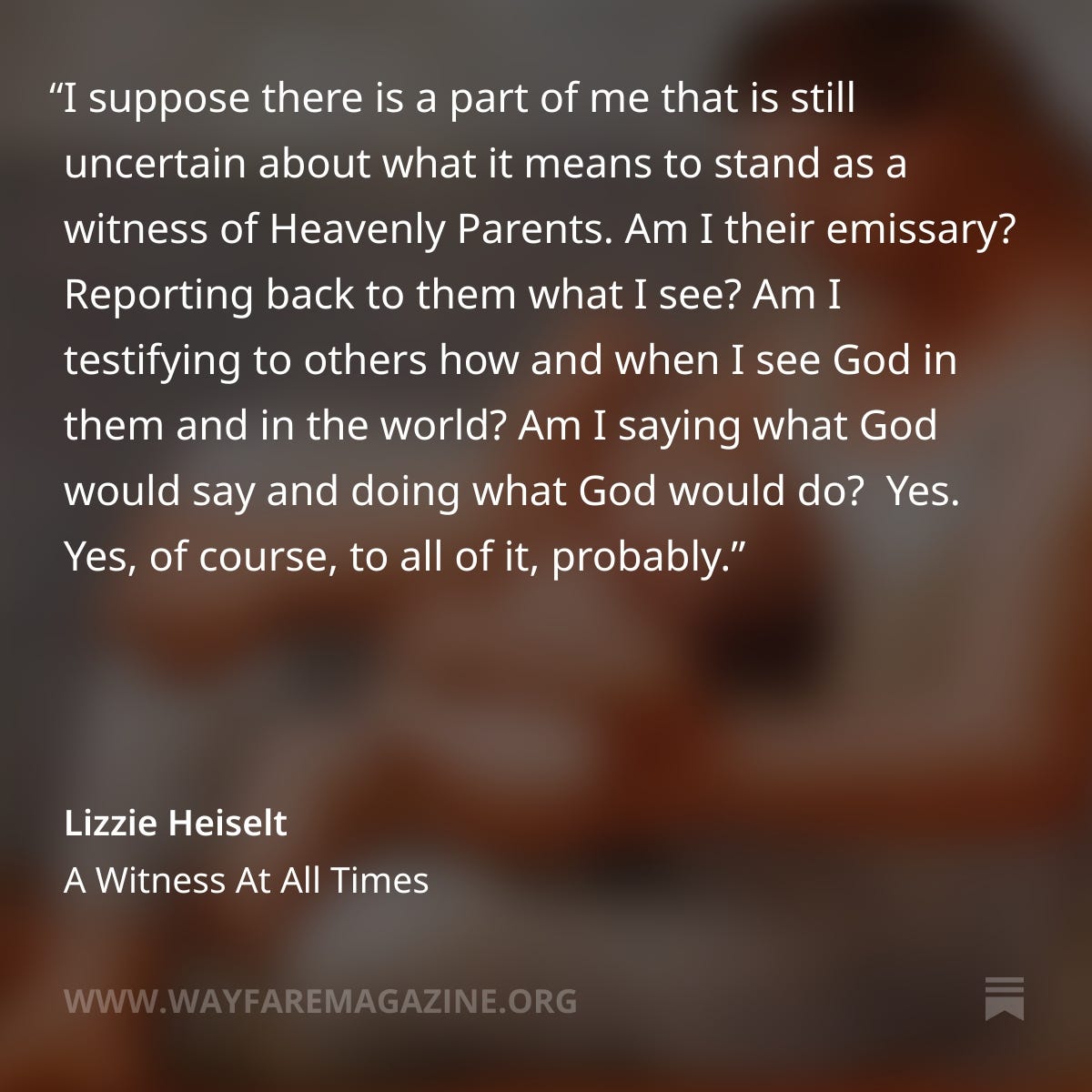Saying Yes to God’s Presence
Faith Matters resources to accompany your Come Follow Me study: February 17-23
I can participate in God’s “great and marvelous work.”
If I were to boil down the meaning of Joseph Smith’s restoration to a single aphorism, This is where everything happens might be my best try. This idea was the engine of the early church’s first migrations. As revelation began to flow, the earth under Joseph’s feet became holy ground in widening circles of sacred geography. The remnant of the house of Israel? They’re here, just down the river. New Jerusalem, site of the second coming? Watch this space, coming soon. The garden of Eden, primordial belly button of the world? It’s here too, in Missouri. Eve ate the apple on the same Ozark highland where my robin ate the inchworm.
If you find a touch of the absurd in this, I agree. We’re accustomed to thinking of the sacred as something apart, exalted. And we have good reason: the roots of the word sacred contain the idea of something protected and removed from ordinary settings, everyday experience. Sacred space is an ancient land, a walled garden, or the top of a mountain, the higher the better. But the restoration introduced a low-elevation version of sacred geography. Right here, at ground level, among normal places and events, sacred things happened.
—Rosalynde Welch, “Airborne at Low Elevation”
What is the work of the Restoration? Listen to “Restoring the People of God,” an excerpt from Restoration:
Yes, there are many “things” to restore. But ultimately God isn't concerned with restoring “things” as much as he is with using those things to restore what really matters—“his people.” So the “restoration of all things” is designed with one grand aim in mind: restoring God's people—our Father and Mother's children, their eternal family—to wholeness.”
…The poor will receive the kingdom of heaven. The brokenhearted will be healed. The captives will be liberated. The blind will see. The bruised will be made whole. In the ultimate sense, this is the work of atonement and reconciliation that only our Savior Jesus Christ can fully accomplish. But in the more immediate sense, the call of the Restoration is for each recipient of Christ's redeeming love to extend that grace by co-participating with him as “saviors... on Mount Zion.”
That salvation cannot and will not wait for the next world. The restoration of God's people is here. The restoration of God’s people is now.
Listen to our conversation with Patrick about Restoration:
Jesus Christ sent John the Baptist to restore the Aaronic Priesthood.
How do the ordinances of the Aaronic Priesthood (such as baptism and the sacrament) help prepare the way for you to receive the Savior in your life? If you’re looking for a roadmap for how to engage with “the works” of religious life in ways that bring meaning, rather than a feeling of just going through the motions for years and years on end, you might enjoy Gracing, by Hannah Packard Crowther. Read an excerpt on this topic, published in Wayfare, and check out a few other other essays, too:
What are priesthood keys?
Listen to (or read a transcript of) our conversation with Barbara Morgan Gardner on The Priesthood Power of Women:
A key turns and lock and it allows somebody to open the door. So the Aaronic priesthood has the key of the ministering of angels, but who then receives the key of the ministering of angels? Anybody who makes and keeps sacred covenants associated with that key. So any young woman who is sitting in sacrament meeting and partakes of that sacrament and is worthy has the ministering of angels. Frankly, any member of the church, and we would say any eight year old, an eight year old who is partaking, worthy of that sacrament, has the ministry of angels. And so she has the blessing of having angels on her right hand and on her left hand and her back and her front. And there’s a long discussion about what this ministry of angels is, but every member of the church has it. Male and female, female and male alike.
In the Greco-Roman world of early Christianity, women were considered inferior to men. Dr. Ariel Bybee Laughton says Christianity offered new ways to think about the roles of women in society, and their power and authority waxed and waned over time. Listen to her discussion with Blair Hodges on her chapter “Church Organization: Priesthood Office and Women’s Leadership Roles” from the book Ancient Christians: An Introduction for Latter-day Saints in the Wayfare podcast “Meet the Early-day Saints”:
For more on the role of women in the LDS Church, listen to “The Future of Women at Church: A Conversation with Neylan McBaine” and “What's the Future of Women at Church? - A Conversation with Neylan McBaine and Bethany Brady Spalding,” and read “Women at Church: 10 Years Later” by Neylan McBaine in Wayfare magazine.
Ordinances give me access to God’s power. Heavenly Father blesses me through the Aaronic Priesthood.
… It’s not just separate and distinct agreements made at baptism, during the sacrament, and in the temple. It’s not a legal contract with pages of clauses. It’s one promise. It’s one choice. It’s saying yes to gracing. Fundamentally, it’s not making covenants (plural), it’s living in covenant (singular). It’s living in Christ.
Baptism is not fundamentally about keeping some people out of heaven and letting others in. The symbol is an invitation. Baptism says, “Salvation is here.” Right now. Enter God’s presence and start living life as it was meant to be lived. Baptism says, “In Christ, your old self has died and your new one has risen.” Don’t wait. Enter into the divine dance now, so that when you mourn with those who mourn, and comfort those who stand in need of comfort, you will do these things differently. You will do them in Christ.
…Life is busy, no doubt. And it can easily become a long list of empty nothings if we constantly find ourselves checked out or oblivious to our divine partner. We may think we’re on our way to heaven as we do all the right things, but in this frame of mind, we could arrive in heaven and not even know it. All these works, even if performed exactly and by the book, will be hollow. They will fail to transform us. They won’t help us fly.
Going deeper, we can repurpose our tools. Learning to bring God’s music into our activities often requires practice. Our intention shifts. We say yes to God. We invite God into the process, even if the end result is unknowable or undefined. It’s characterized by hope and seeking. It has a wholly and holy different feel.
—Hannah Packard Crowther, Gracing
Bringing souls unto Christ is of great worth. Helping others come to Jesus Christ is “of the most worth.”
In 2022, we spoke with Jeff Strong about the experience of missionaries in today’s mission field, including the unique challenges and opportunities they face. This conversation was based largely on a document Jeff wrote, called “What One Mission President Would Tell His Own Grandchildren About Serving a Mission.”
You can also hear about Jeff’s experience as a mission president of the Bentonville, Arkansas Mission where he and his wife led a phenomenally successful pilot program with their missionaries. For us, the story of the Bentonville, Arkansas mission has totally revolutionized the way we imagine missionary work.
Can Latter-day Saints claim to belong to God’s true church when we learn, in our encounters with other people and religions, that we’re a tiny minority and that God is present and working through other religions too? Read “True and Living Church: Bearer and Receiver of Gifts,” a chapter from Restoration by Patrick Mason, and go deeper with more from The Big Questions Project: In what way is our church “the true church?”
The Lord uses witnesses to establish His word.
I can be a witness of the Book of Mormon.
How do we reconcile Book of Mormon “problems” with the claim that it is the “most correct” scriptural text? And is it essential that we see the Book of Mormon as truly historical—i.e. written by ancient writers about an ancient people? Could it be some other form of writing—inspired or otherwise?
I see divine fingerprints all over the Book of Mormon; that’s what keeps me reading. But I also see human fingerprints on it. And to recognize the mix of both I think is healthy and valuable… If we set things up from the very beginning that you’re not allowed to approach this text unless you have a bedrock testimony as certain people define it, then we have closed off the kinds of conversations that scripture in general is trying to engender. —Jared Halverson
What would happen if we leaned into the strangeness of seer stones and other bewildering details of the [Book of Mormon’s] production? What if, in those disorienting details, we find help with the divine work the book’s words call us to join? What if our embarrassment and discomfort are central to the book’s purposes, a vital feature of its power to connect us to Christ, which also means to each other—the convicted and incredulous both? —James Egan
Nephi, Jacob, Alma, Mormon, and Moroni are some of the wisest, most thoughtful, most spiritually mature voices in our religious tradition. By coming to know them through a detailed study of their struggles and encounters with divinity, as conveyed in their writings and editing, we can come to know Christ. The Book of Mormon is much more than is strictly necessary for a basic understanding of Christian principles and a testimony of Joseph Smith. It is one of the most miraculous elements of the Restoration, a self-revelation of God that apparently could not be adequately conveyed in less than five hundred pages. —Grant Hardy
That’s probably the most embarrassing part of our story, the gold plates, which you can't see, which are no longer here… it seems like it's crazy to believe in. But the gold plates represent a part of our belief in magic. That we live in a world where, who knows when an angel will come through the door? And when they will find marvelous things that are not just something fuzzy up in heaven? —Richard Bushman









